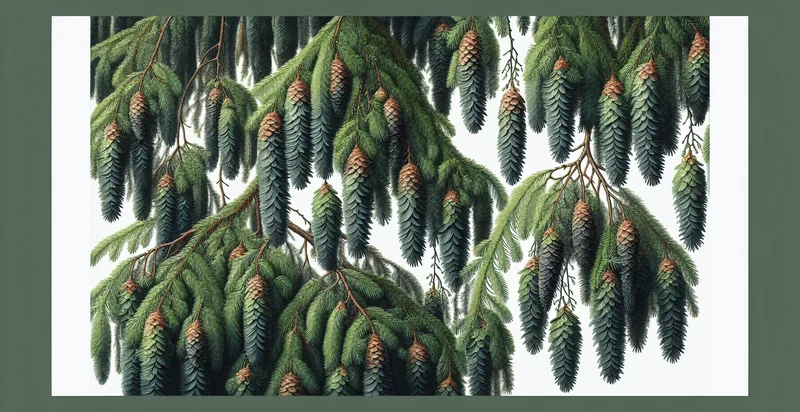Identify if tree is a hemlock
using AI
Below is a free classifier to identify if tree is a hemlock. Just upload your image, and our AI will predict if it's a hemlock - in just seconds.

Contact us for API access
Or, use Nyckel to build highly-accurate custom classifiers in just minutes. No PhD required.
Get started
import nyckel
credentials = nyckel.Credentials("YOUR_CLIENT_ID", "YOUR_CLIENT_SECRET")
nyckel.invoke("if-tree-is-a-hemlock", "your_image_url", credentials)
fetch('https://www.nyckel.com/v1/functions/if-tree-is-a-hemlock/invoke', {
method: 'POST',
headers: {
'Authorization': 'Bearer ' + 'YOUR_BEARER_TOKEN',
'Content-Type': 'application/json',
},
body: JSON.stringify(
{"data": "your_image_url"}
)
})
.then(response => response.json())
.then(data => console.log(data));
curl -X POST \
-H "Content-Type: application/json" \
-H "Authorization: Bearer YOUR_BEARER_TOKEN" \
-d '{"data": "your_image_url"}' \
https://www.nyckel.com/v1/functions/if-tree-is-a-hemlock/invoke
How this classifier works
To start, upload your image. Our AI tool will then predict if it's a hemlock.
This pretrained image model uses a Nyckel-created dataset and has 2 labels, including Hemlock Tree and Not Hemlock Tree.
We'll also show a confidence score (the higher the number, the more confident the AI model is around if it's a hemlock).
Whether you're just curious or building if tree is a hemlock detection into your application, we hope our classifier proves helpful.
Related Classifiers
Need to identify if tree is a hemlock at scale?
Get API or Zapier access to this classifier for free. It's perfect for:
- Forest Health Monitoring: This function can be used to identify hemlock trees in various forested areas. By assessing the prevalence of hemlocks, forestry professionals can monitor ecosystem health and identify potential threats, such as infestations or diseases that specifically target these trees.
- Timber Harvest Planning: Timber companies can utilize this identifier to ensure effective planning of harvesting operations. By locating hemlock trees, organizations can make informed decisions about which areas to harvest and which to conserve, maintaining ecological balance.
- Conservation Efforts: Environmental organizations can employ this classification function to focus on protecting hemlock populations. By mapping locations of these trees, conservationists can develop targeted strategies to preserve habitats and enhance biodiversity in affected regions.
- Urban Planning: City planners can integrate this identifier into urban forestry management practices. By recognizing hemlocks in urban environments, planners can make better decisions regarding tree maintenance, disease management, and landscape design, ensuring public spaces are safe and beautiful.
- Educational Tools: Schools and nature centers can use the hemlock identifier as part of educational programs about local ecology. This application could help students and visitors learn to identify various tree species and understand their roles within ecosystems.
- Remote Sensing Applications: Researchers can combine this function with remote sensing technologies to gather large-scale data on hemlock distribution. This information can inform broader ecological studies and contribute to climate change research by examining tree responses to environmental factors.
- Pest and Disease Monitoring: Agricultural and forestry researchers can utilize the identifier to track hemlock trees in relation to pest and disease outbreaks. Understanding where hemlock populations are most affected can help scientists develop targeted intervention strategies and improve forest management practices.


